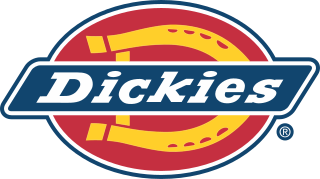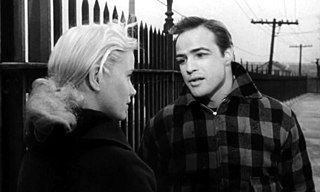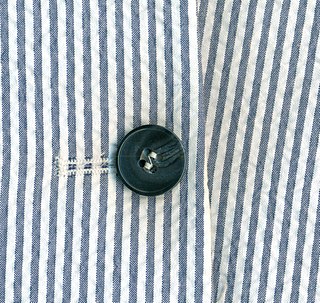 W
WWorkwear is clothing worn for work, especially work that involves manual labour. Often those employed within trade industries elect to be outfitted in workwear because it is built to provide durability and safety.
 W
WThe Aloha shirt, also referred to as a Hawaiian shirt, is a style of dress shirt originating in Hawaii. They are collared and buttoned dress shirts, usually short-sleeved and cut from printed fabric. They are often worn untucked, but can be worn tucked in as well. They are not only casual wear, but serve as informal business attire in Hawaii.
 W
WBusiness casual is an ambiguously defined Western dress code that is generally considered casual wear but with smart components of a proper lounge suit from traditional informal wear, adopted for white-collar workplaces. This interpretation typically including dress shirt, necktie, and trousers, but worn with an odd-coloured blazer or a sports coat instead.
 W
WCarhartt, Inc., is a U.S.-based apparel company founded in 1889. Carhartt is known for its work clothes, such as jackets, coats, overalls, coveralls, vests, shirts, jeans, dungarees, fire-resistant clothing and hunting clothing. It is still a family-owned company, owned by the descendants of founder Hamilton Carhartt, with its headquarters in Dearborn, Michigan.
 W
WThe ceinture fléchée [sɛ̃tyʁ fleʃe] is a type of colourful sash, a traditional piece of French-Canadian clothing linked to at least the 17th century. The Métis also adopted and made ceintures fléchées and use them as part of their national costume. French-Canadian and Métis communities share the sash as an important part of their distinct cultural heritages, their cultural distinctions, their nationalities, their national costumes, their histories and their resistance. While the traditional view is that the ceinture fléchée is a French-Canadian invention, other origins have been suggested as well. According to Dorothy K. Burnham who prepared an exhibit on textiles at the National Gallery of Canada in 1981, and published an accompanying catalogue raisonné, this type of finger weaving was learned by residents of New France from Indigenous peoples. It is believed that French settlers-habitants were influenced and inspired by "Wampum Belts" and learned specific finger-weaving patterns from Indigenous Peoples of the Eastern Woodlands. With European wool-materials, the syncretism and unification of French and Indigenous finger-weaving techniques resulted in the making of Arrowed Sashes. L'Assomption Sash is the oldest known sash design; produced by French habitants or artisans in Québec.
 W
WWilliamson-Dickie Mfg. Co. is an apparel manufacturing company primarily known for its largest brand, Dickies. The company was founded in Fort Worth, Texas, in 1922 by C. N. Williamson and E. E. "Colonel" Dickie, who began a denim bib overall company selling workwear to farm and ranch hands around the Southwest. Today, Dickies is a global brand found in more than 100 countries designing, manufacturing and selling workwear to the automotive, hospitality, construction and medical industries. Williamson-Dickie also owns the Walls, Liberty and Kodiak brands.
 W
WA high heel policy is a regulation or law about the wearing of high heels, which may be required or forbidden in different places and circumstances.
 W
WInformal wear, also called business wear, corporate/office wear, tenue de ville and (colloquially) dress clothes, is a Western dress code for clothing defined by a dress shirt with necktie, sometimes with a business suit for men, and cocktail dress or pant suit for women. On the scale of formality, it is considered less formal than semi-formal wear but more formal than casual wear, yet retaining availability for more personal expression than semi-formal wear. Thus, informal should not be confused with casual wear such as business casual or smart casual despite that some people may refer loosely to informal dress as "formal" in contrast with merely casual.
 W
WJeans are a type of pants or trousers, typically made from denim or dungaree cloth. Often the term "jeans" refers to a particular style of trousers, called "blue jeans", which were invented by Jacob W. Davis in partnership with Levi Strauss & Co. in 1871 and patented by Jacob W. Davis and Levi Strauss on May 20, 1873. Prior to the Levi Strauss patented trousers, the term "blue jeans" had been long in use for various garments, constructed from blue-colored denim.
 W
WMackinaw cloth is a heavy and dense water-repellent woolen cloth, similar to Melton cloth but using a tartan pattern, often "buffalo plaid". It was used to make a short coat of the same name, sometimes with a doubled shoulder. These jackets have their origins on the Canadian frontier and were later made famous by Canadian and American loggers in the upper Midwest as workwear during the mid-19th century logging boom.
 W
WPevsner v. Commissioner, 628 F.2d 467 is a United States federal income tax case before the Fifth Circuit. It dealt with the issue of whether clothes purchased solely for use at work could be treated as a business expense deduction on a taxpayer's return.
 W
WSeersucker or railroad stripe is a thin, puckered, all-cotton fabric, commonly striped or chequered, used to make clothing for spring and summer wear. The word came into English from Hindi, and originates from the Persian words شیر shîr and شکر shakar, literally meaning "milk and sugar", from the resemblance of its smooth and rough stripes to the smooth texture of milk and the bumpy texture of sugar. Seersucker is woven in such a way that some threads bunch together, giving the fabric a wrinkled appearance in places. This is often realized during weaving by warp threads for the puckered bands being fed at a greater rate than the warp threads of the smooth stripes. This feature causes the fabric to be mostly held away from the skin when worn, facilitating heat dissipation and air circulation. It also means that pressing is not necessary.
 W
WSnickers Workwear is a Swedish company which designs, manufactures and distributes workwear for professional tradesmen and service people.
 W
WThe Stormy Kromer cap is a wool hat manufactured by Stormy Kromer Mercantile. The hat is popular in the Midwest region of the United States and with hunters and outdoorsmen. It is named for George "Stormy" Kromer (1876-1970), a semi-professional baseball player who later worked as a railroad engineer. Kromer lost many hats to the wind while working on trains, and in 1903 he asked his wife Ida (1877-1960) to make him a warm hat that would stay on more securely. She modified a baseball cap into what became the Stormy Kromer cap by sewing on a pair of ear flaps. A summer version, made from pillow ticking, remains in use among modern American train engineers, and variants with red or blue polka dots were formerly popular in the early 20th century.
 W
WA trading jacket is a blazer garment worn by a broker who executes trades by open outcry in and around the trading pits of various financial exchanges. Throughout the twentieth century, trading jackets were simply white. Following counterculture of the 1960s, they became brightly colored and distinctive to assist in the identification of specific traders and/or the exchange members for whom they work. In the United States, American flags became a common accoutrement following the September 11 attacks. Today, trading jackets are mostly anachronistic as open outcry exchanges have been displaced by electronic trading platforms. Chicago-based PECO Inc has been the leading supplier of trading jackets since 1919.
 W
WA trucker hat, mesh cap or netback cap is a type of baseball cap. It is also sometimes known as a "gimme [as in 'give me'] cap" or a "feed cap" because this style of hat originated during the 1960s as a promotional give-away from U.S. feed or farming supply companies to farmers, truck drivers, or other rural workers.